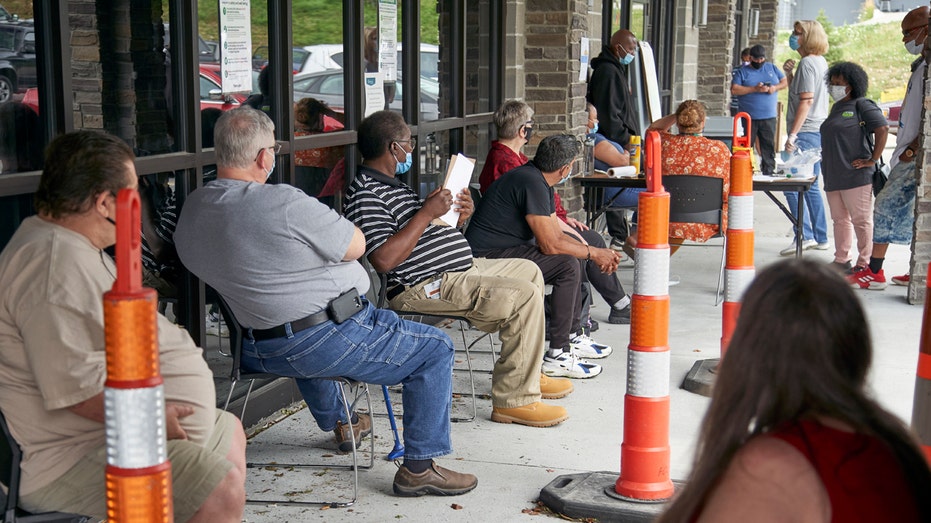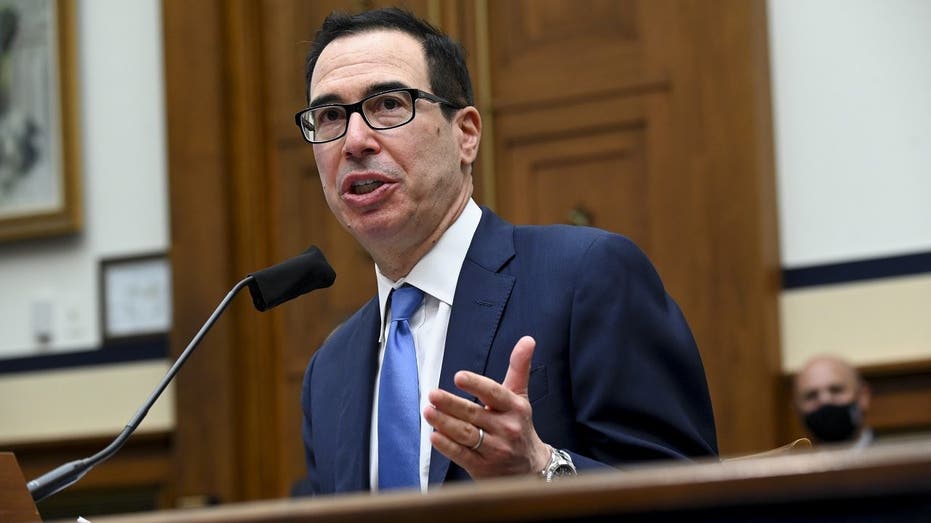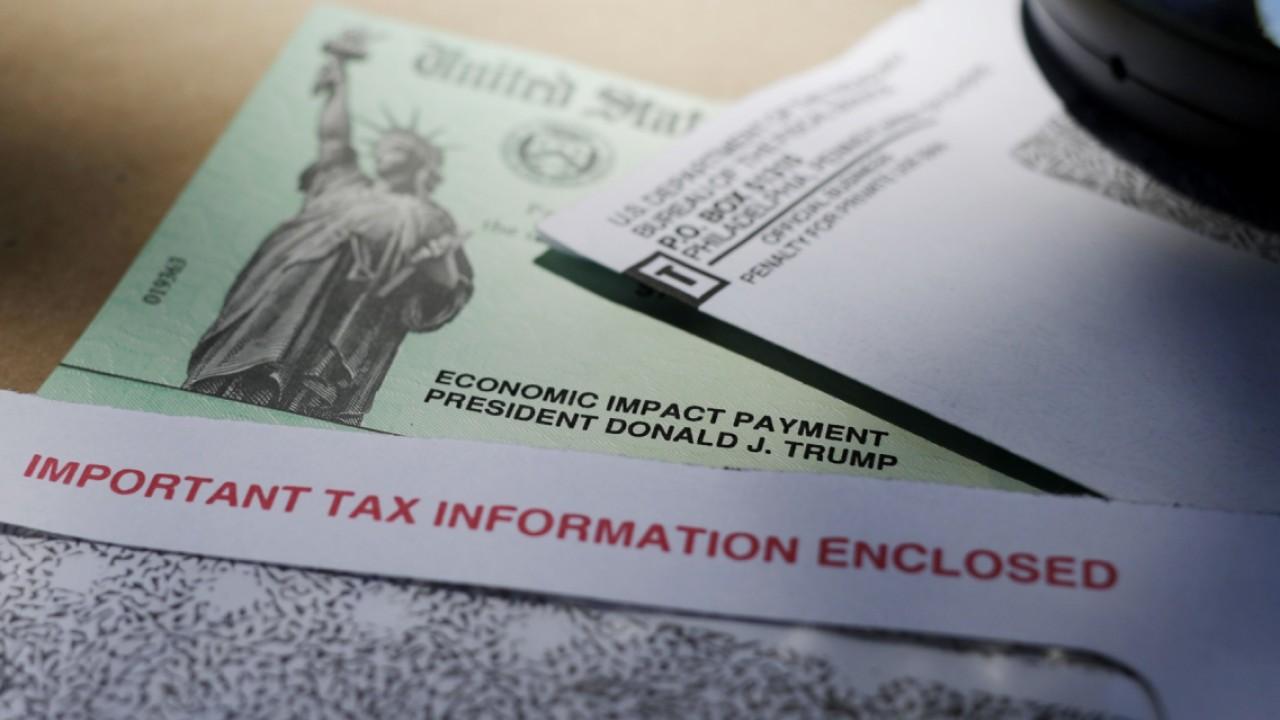Is $600 a week in extra unemployment aid deterring people from seeking work?
While many economists say no, the question is spurring a debate in Congress as it considers the extension of Covid-19 benefits
WASHINGTON -- Disagreement in Congress over whether to scale back unemployment aid for workers laid off during the coronavirus pandemic centers on a key question: Are the extra weekly payments of $600 keeping people from returning to work?
Senate Republicans this week proposed reducing the payments to $200 a week, saying the larger payments are keeping workers on the sidelines because many receive more in jobless aid than they did working. Senate Democrats have proposed keeping the $600 a week payments temporarily and shrinking them as the economy improves, saying workers need more support while the pandemic continues to hobble the U.S. job market.
"Basically we have no evidence in our sample of a change in employment that's attributable to this policy change"
Many economists who have studied the benefits say they so far don't see evidence in labor market data that the payments are affecting the rate at which people are returning to work during the pandemic.
A study published this month by Yale University economists found that workers with more-generous jobless benefits didn't experience larger employment declines when the benefits took effect and that they have returned to their previous jobs at similar rates as others.
WHITE HOUSE, REPUBLICAN PROPOSAL CUTS JOBLESS AID FROM $600 TO $200
"Basically we have no evidence in our sample of a change in employment that's attributable to this policy change," said Dana Scott, the study's primary author.
In addition to helping to support the economy, one of the goals of the $600 weekly payments -- approved by Congress through the end of July as part of an earlier economic-relief package -- was to reduce the financial impact on workers who were staying home while businesses closed to slow the spread of the virus. The enhanced payments amount to $15 an hour in a 40-hour workweek, before regular state unemployment benefits are included.
The payments also resulted in 68% of unemployed workers receiving more in benefits than they did working, researchers at the University of Chicago found.
Some businesses have said the size of the payments was a factor in getting people to return to work, and some workers have cited the benefits as a reason for not returning to work.
GOP PROPOSAL FOR $200 UNEMPLOYMENT AID WOULD MEAN BENEFIT CUT FOR 30M AMERICANS
Megan Weaver, 36 years old, who lost her job in Austin, Texas, as a restaurant server when the pandemic hit, said she hadn't realized she would be losing nearly $300 a week when she took a short-term position doing transcription work in April that paid less than her unemployment benefits. If she had, she said she wouldn't have taken the job.
"I want to work, but I don't want to lose money for working," she said.
Ms. Weaver said she has been saving to prepare for the end of the federal aid. She added that she doesn't feel comfortable going back to her old restaurant job because of health concerns. She recently took a job teaching a summer program for children through Zoom, but the work is only short-term.

Job seekers exercise social distancing as they wait to be called into the Heartland Workforce Solutions office in Omaha, Neb., Wednesday, July 15, 2020. Nebraska reinstated job search requirements this week for most people claiming jobless benefits. (Assocciated Press)
The extra weekly jobless benefits, amounting to roughly $18 billion a week, are set to expire at the end of this week unless Congress acts. The Republican plan released Monday would eventually shrink the payments so a worker's total benefit -- known as the wage replacement rate -- amounts to no more than 70% of prior pay.
EXTRA $600 IN UNEMPLOYMENT BENEFITS BOOSTED US ECONOMY, STUDY FINDS
When the pandemic hit the U.S., unemployment and the number of workers seeking unemployment assistance shot up to record levels. As states began to reopen, the labor market began to recover, regaining 7.5 million jobs in May and June to offset some of the 22 million jobs lost in the first two months of the pandemic.
Ernie Tedeschi, an economist at Evercore ISI who served as a Treasury Department economist during the Obama administration, said his analysis showed 70% of people who went back to work last month did so despite likely receiving more in benefits than they had in pay from previous jobs.
"What we see in the data in May and June is there's no relationship between job-finding or job-leaving and the generosity of unemployment insurance benefits," Mr. Tedeschi said.
Economists say the size of the benefits has had effects in some cases. But those effects have been smaller because of the collapse in labor demand caused by the pandemic, said Joseph Altonji, a co-author of the Yale study.
Workers who have declined to return to their jobs generally cite a range of factors in their decisions, including lack of child care or concern about health risks.
EXTRA UNEMPLOYMENT AID ENDS AS MILLIONS OF AMERICANS REMAIN OUT OF WORK
In a poll of unemployed workers released this month by the Bipartisan Policy Center, a centrist Washington, D.C., think tank, almost half of people receiving benefits said they weren't currently looking for work. Of those, 16% said it was because their benefits were greater than their previous paycheck. Only 12% said their employer had asked them to return to work.
Shai Akabas, the center's director of economic policy, said that while the share of workers citing the generosity of benefits is small, it amounts to millions of people. The effect is likely to grow if benefits were extended for a long period, he said.
"We're not going to use taxpayer money to pay people more to stay home," Treasury Secretary Steven Mnuchin said Saturday.

Treasury Secretary Steven Mnuchin speaks during a House Small Business Committee hearing on oversight of the Small Business Administration and Department of Treasury pandemic programs on Capitol Hill in Washington, Friday, July 17, 2020. (Erin Scott/
Under the stimulus law, the median worker has received benefits amounting to 134% of prior pay, University of Chicago researchers found in studying wage-replacement rates.
An analysis from the White House Council of Economic Advisers estimated that keeping the rate below 100% would help lower the overall unemployment rate by the end of the year and that a rate around 75% would reduce unemployment substantially.
GET FOX BUSINESS ON THE GO BY CLICKING HERE
A study published last month by the Brookings Institution, however, found that states with the lowest wage-replacement rates saw the steepest collapse in hours worked and have so far experienced the slowest labor-market recovery -- findings similar to those of the Yale study.
Whether this pattern will hold as the public-health risks from the pandemic recede isn't clear, the authors of the Brookings study added.
There is some evidence that enhanced benefits can slow a jobs recovery: A 2015 study by the economists Marcus Hagedorn, Iourii Manovskii and Kurt Mitman found that an abrupt halt in extended benefits in the U.S. at the end of 2013 led to higher employment the following year.
The Congressional Budget Office has projected that employment would be lower in the second half of 2020 and the first half of 2021 if the full payments are extended through the end of the year. But it said economic output would be higher, as more people are able to maintain spending patterns.
--Te-Ping Chen contributed to this article.
Write to Kate Davidson at kate.davidson@wsj.com
CLICK HERE TO READ MORE ON FOX BUSINESS




















